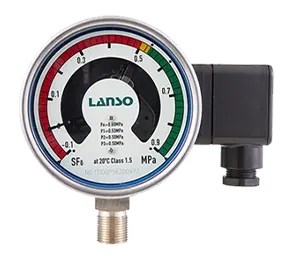1. What are the applications of SF6 relay connector transformation?
An SF6 relay is an indispensable and important part of SF6 electrical equipment and plays an important role in protecting the safe operation of SF6 electrical equipment and the entire power grid. However, due to various reasons, it will affect the sealing and continuous power supply of the equipment when it is inspected.
It is very necessary for the SF6 relay to be inspected or replaced without a power outage, which not only conforms to the economic benefits of the power supply company but also ensures the life safety of the staff.
The SF6 gas is widely used in high-voltage switchgear due to its arc-extinguishing characteristics and good stability and insulation. Its purity and density directly affect whether the high-voltage switchgear can operate normally.
If the SF6 gas density decreases due to leakage and other reasons, the water content of the gas in the gas circuit in the equipment will increase accordingly, which will reduce the breaking performance and insulation performance of the equipment.
In order to monitor the density of SF6 gas in the equipment in real time, all high-voltage switchgear are equipped with gas density relays, commonly known as SF6 relays.
Although the direct SF6 gas density meter is different, the connection method between the device body and the density relay is generally the same.
Due to the lack of an isolation valve between the equipment body and the density relay, when checking the SF6 relay, if the connection is a check valve, the density relay must be removed from the check valve.
Gas density measurement is not easy to achieve, so in engineering practice, the density of SF6 gas is mostly measured by measuring the pressure of SF6 gas at 20 °C.
If the connection is an interface, you must apply for power failure of the equipment and disconnect the connecting pipeline from the check valve of the equipment body before removing the SF6 relay.
In fact, it is to monitor the gas pressure at a temperature of 20°C in the equipment and to alarm and lock the equipment according to the drop of the gas pressure.
In addition, the vast majority of SF6 electrical equipment and its density relays are sealed with sealants and gaskets when connecting with the check valve interface.
If the SF6 relay is frequently disassembled, it will inevitably cause damage to its sealing, resulting in slow air leakage of the equipment, which will bring hidden dangers to the safe operation of the entire power grid.
When the gas pressure in the equipment continues to drop and is lower than the blocking pressure, the relay will issue a blocking command to terminate all activities of the equipment, thereby ensuring the safety of the high-voltage switchgear and the entire power system.
2. Common problems and causes of SF6 relay
1) Oil leakage and other reasons will lead to a decrease in the seismic performance of the relay. When the switch is strongly impacted, it is prone to abnormal contacts, stuck pointers, and excessive deviations;
2) There is a problem with the quality of the relay itself. After a strong impact, there are phenomena such as abnormal contacts, stuck pointers, and excessive deviation;
3) Due to the problem of its own quality, the SF6 relay has the problem of inaccurate temperature compensation and large error;
4) The pointer drifts and affects the accuracy because it has not been overhauled after a long time of operation;
5) At present, the relays generally use magnetic-assisted electrical contacts. The closing force of this contact is relatively small. If it has been oxidized for a long time, the contact will have poor contact or no connection.
For the oil-free SF6 relay, the oxidation of magnetically assisted electrical contacts can solve the problems in operation due to long-term exposure to the air.
The transformation of an SF6 gas density relay connector is to use the valve-controlled SF6 relay tee connector with an anti-mislock function, which is used in SF6 density electrical appliances to realize the on-off of the gas circuit of the density relay and the gas circuit of the switch body.
The valve control can isolate the SF6 electrical equipment and the SF6 relay to be verified so that the original SF6 relay can be verified without disassembly, and the air circuit of the density relay and the air circuit of the switch body can be connected and disconnected.
And it can be locked to protect the valve from misoperation, saving the precious time of maintenance personnel, and reducing the risk of SF6 leakage and equipment damage caused by regular verification and disassembly.
Related Article for Reference
Common Problems of SF6 Gas Density Relay
1. What is SF6 density relay?(1) SF6 gas density relay is mainly used to monitor and control the density of SF6 gas in the sealed container. Generally used in high voltage switch, medium voltage switc...
Mon 02 2023







